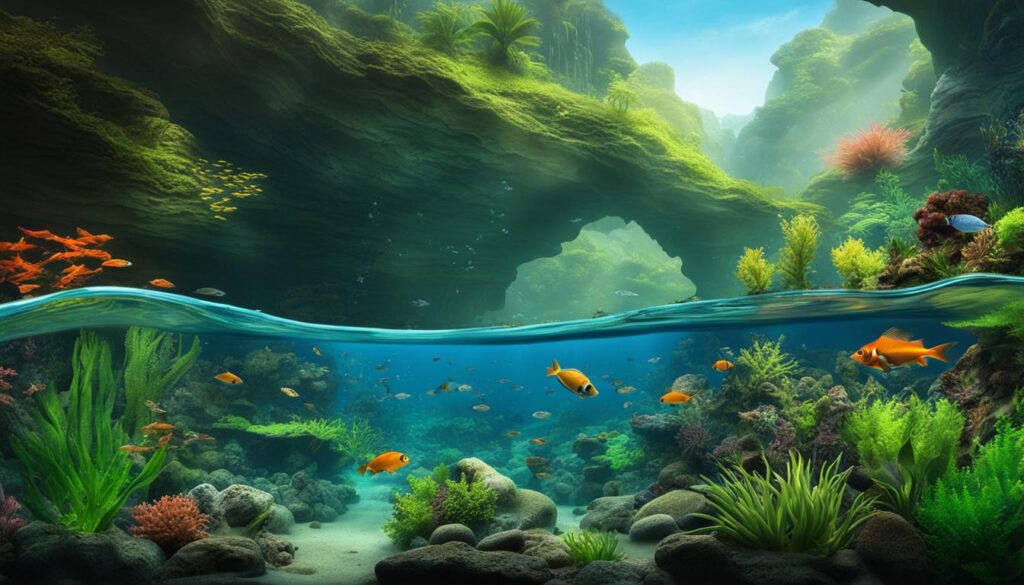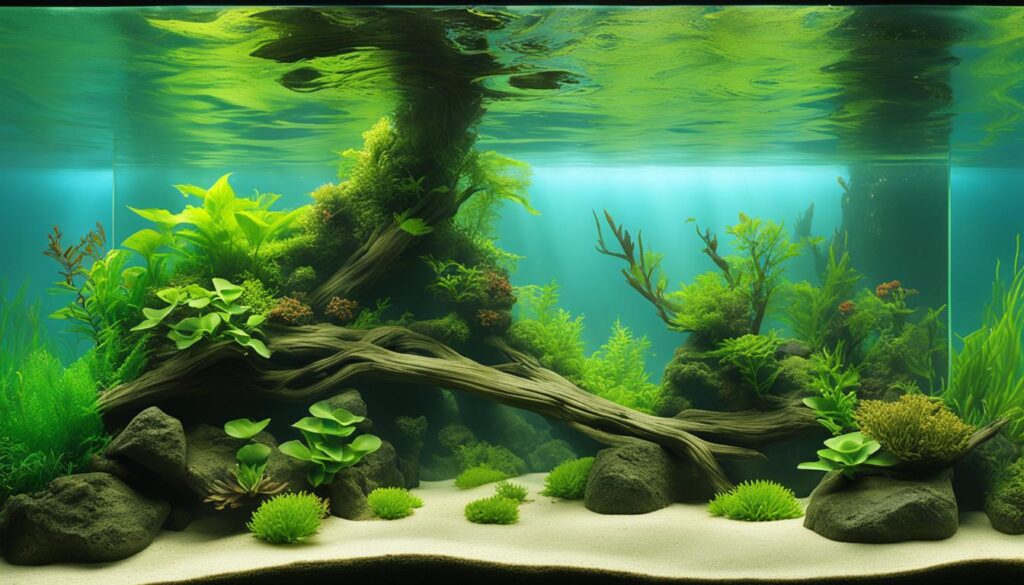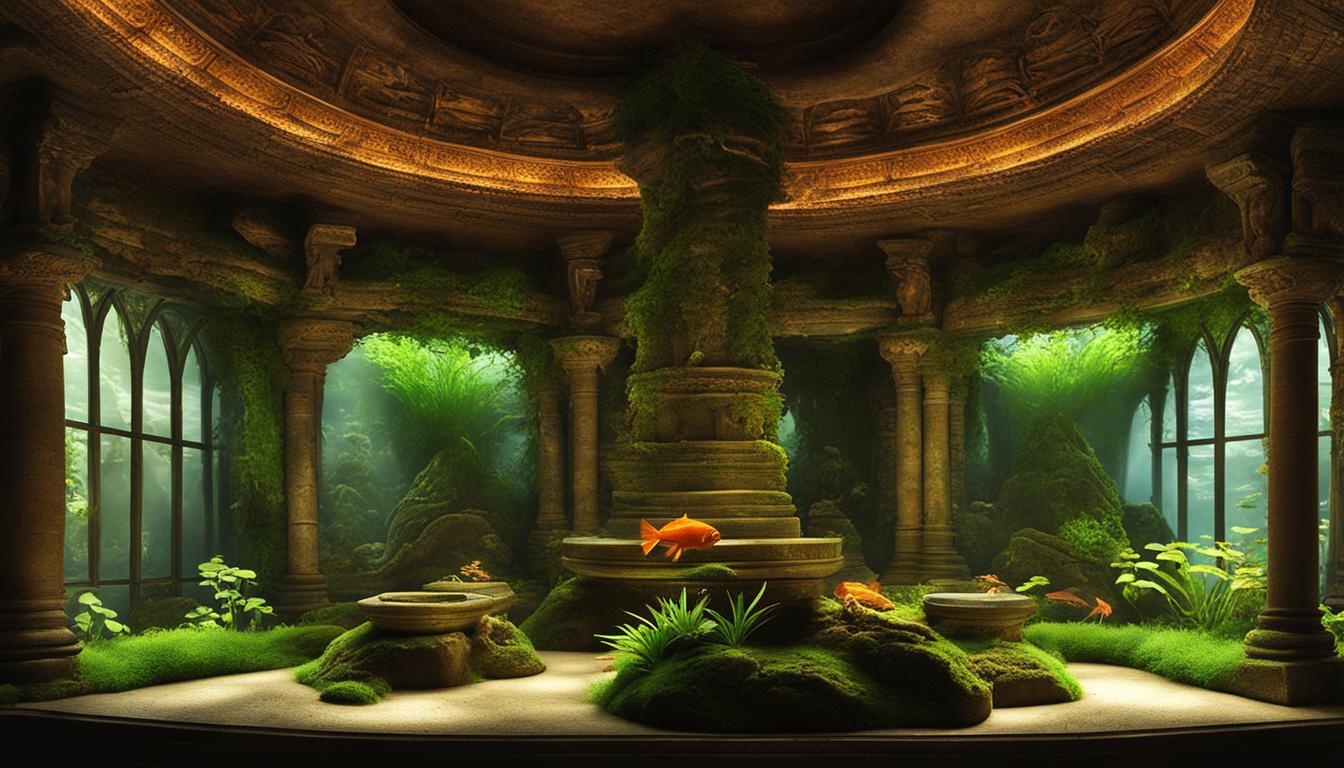Diving Into History: The Ancient Roots of Fishkeeping
Fishkeeping is a beloved hobby practiced by aquarists around the world. But did you know that this fascination with underwater life has ancient origins? From the Sumerians to the Egyptians, early civilizations had their own unique ways of keeping fish.
The Sumerians, known for their agricultural practices, kept wild-caught fish in ponds as early as 2,500 BCE. These fish were later prepared for meals, making fishkeeping an essential part of their daily lives.
The ancient Egyptians depicted sacred fish being kept in captivity in rectangular temple pools. These fish were considered sacred, and their presence in ancient artworks demonstrates the importance of fishkeeping in Egyptian culture.
In Asia, rice paddies were stocked with freshwater fish suitable for eating. This practice not only provided a sustainable food source but also inadvertently laid the foundation for modern fishkeeping.
Over time, fishkeeping techniques and methods evolved. Carp breeding, which began over 2,000 years ago in Japan and China, led to the domestication of koi and fancy goldfish. In Medieval Europe, carp pools were common on estates and monasteries, serving both practical and aesthetic purposes.
The historical significance of fishkeeping cannot be overlooked. These ancient practices not only provided insight into the origins of fishkeeping but also paved the way for the development of modern aquariums and the thriving hobby enjoyed by millions today.
Key Takeaways:
- The ancient roots of fishkeeping date back to civilizations like the Sumerians, Egyptians, and Asians.
- Early fishkeeping practices included keeping wild-caught fish for food and sacred fish in temple pools.
- Carp breeding in Japan and China laid the foundation for the domestication of koi and fancy goldfish.
- Ancient fish tanks and carp pools in Medieval Europe showcased the aesthetic side of fishkeeping.
- The historical significance of fishkeeping has shaped the modern aquarium hobby enjoyed by many.
Types of Fishkeeping Systems
Fishkeeping can be categorized into different systems based on the type of water and fish being kept. Let’s explore the three main types of fishkeeping systems: freshwater fishkeeping, brackish water fishkeeping, and saltwater fishkeeping.
Freshwater Fishkeeping
Freshwater fishkeeping is the most popular branch of the hobby, attracting enthusiasts of all levels. It offers a wide variety of fish species, making it accessible for beginners and experienced aquarists. Freshwater tanks can range from simple community setups with a mix of compatible fish, to specialized breeding tanks for selective breeding and promoting favorable genetic traits. Some popular freshwater fish include guppies, tetras, bettas, and cichlids.

Brackish Water Fishkeeping
Brackish water fishkeeping involves maintaining a salinity level between freshwater and saltwater. This type of fishkeeping is perfect for brackish water species that come from estuaries and mangroves, where freshwater rivers meet the ocean. Brackish tanks can be home to unique fish like archerfish, pufferfish, and mudskippers. These tanks require special care to maintain the correct salinity level and replicate the natural habitat of the fish.
Saltwater Fishkeeping
Saltwater fishkeeping, also known as marine fishkeeping, is a more advanced and challenging type of fishkeeping. It involves creating an environment that mimics the ocean’s conditions, including specific water parameters, lighting, and filtration systems. This type of fishkeeping is popular among experienced aquarists who are fascinated by the stunning colors and diversity of marine life. Saltwater tanks can house various fish species, corals, anemones, and other invertebrates. Some popular saltwater fish include clownfish, tangs, gobies, and angelfish.
Each type of fishkeeping system offers its own unique challenges and rewards. Whether you’re a beginner starting with freshwater fishkeeping or an experienced hobbyist venturing into the world of saltwater fishkeeping, the key is to research and understand the specific needs of the fish and provide them with a suitable environment to thrive.
Aquarium Maintenance
Proper aquarium maintenance is essential for keeping fish healthy and maintaining a balanced ecosystem. By regularly tending to your aquarium, you can ensure optimal water quality, promote nutrient cycles, and provide a clean and safe environment for your aquatic pets.
Water Quality
Water quality is a critical factor in the well-being of your fish. Monitoring and maintaining the parameters of the water, such as temperature, pH level, and ammonia, nitrite, and nitrate levels, is crucial. These factors can impact the health and behavior of your fish, as well as the growth of aquatic plants.
Nutrient Cycles
Creating and maintaining a balanced nutrient cycle is vital for the overall health of your aquarium. Nutrients like nitrogen and phosphorus are essential for the growth of aquatic plants, but an excess can lead to algae blooms and poor water quality. Regularly testing and adjusting nutrient levels, along with proper feeding and waste management, are key to maintaining a healthy balance in the ecosystem.
Filtration Systems
Filtration systems play a crucial role in maintaining water quality by removing waste and providing essential biological filtration. Mechanical filtration removes physical debris, while biological filtration utilizes beneficial bacteria to break down toxic substances. Choose a filtration system that suits the size and requirements of your aquarium, and regularly clean and maintain it to ensure optimal performance.
Additionally, consider the size of your aquarium when planning for maintenance. Larger aquariums generally have a greater capacity to maintain a stable environment compared to smaller ones. Regular water changes, usually 10-20% every 1-2 weeks, help remove accumulated pollutants and maintain water quality.
By dedicating time and effort to aquarium maintenance, you can create a thriving aquatic environment that promotes the health and well-being of your fish and other aquatic inhabitants.
The Art and Science of Aquascaping
Aquascaping is a captivating blend of artistry and science. It involves arranging aquatic plants, rocks, stones, and driftwood within an aquarium to create visually stunning underwater landscapes. This harmonious fusion of design and horticulture has transformed fishkeeping into a breathtaking art form.
Aquascapers draw inspiration from various creative disciplines, such as photography and filmmaking, to craft compositions that are visually striking and evocative. Through careful placement and meticulous attention to detail, they transform the aquarium into a captivating masterpiece.
Exploring Different Aquascape Styles
Aquascaping encompasses an array of distinct styles, each with its own unique characteristics and visual appeal. Let’s take a closer look at some popular aquascape styles:
- The Dutch Style: This style focuses on lush, vibrant plant growth and intricate patterns. It often features a variety of aquatic plants meticulously arranged to create a sense of depth and balance.
- The Japanese Nature Aquarium Style: Inspired by the beauty of nature, this style seeks to recreate natural landscapes within the aquarium. It emphasizes a harmonious balance between hardscape elements like rocks and driftwood, as well as meticulously placed aquatic plant arrangements.
- The Diorama Style: This style aims to replicate specific natural environments, such as forests or mountain streams. It utilizes a combination of plant species, rocks, and other materials to recreate a realistic scene.
The use of live aquatic plants is a hallmark of aquascaping. These plants not only add beauty and depth to the aquascape but also play a vital role in maintaining water quality. They help control algae growth, oxygenate the water, and provide a natural habitat for fish, promoting their overall well-being.

As aquascaping continues to evolve, enthusiasts are constantly exploring new techniques and experimenting with innovative materials to create even more captivating underwater worlds. From underwater forests to stunning rock formations, the possibilities are endless.
“Aquascaping is a living art form. It allows us to bring the beauty and serenity of nature into our homes and provides a sense of tranquility and wonder.”
By embracing the art and science of aquascaping, enthusiasts can transform their aquariums into mesmerizing works of living art. With each carefully placed plant and thoughtfully crafted design, they create breathtaking underwater landscapes that captivate the senses.
The Evolution of Aquariums
The concept of aquariums dates back centuries, with ancient civilizations keeping fish in decorative ponds and tanks. These early aquariums served both practical and aesthetic purposes, providing a way to easily observe and display aquatic life. Ancient Romans, in particular, were known for their elaborate fish tanks, which were adorned with colorful tiles and statues.
“The tranquil waters of aquariums have enchanted humans for centuries, offering a glimpse into the fascinating underwater world.”
However, it was not until the 19th century that the modern aquarium as we know it today began to take shape. Innovators like Robert Warrington and Philip Gosse made significant contributions to the development of aquarium technology and design.
One key advancement was the introduction of glass tanks, which allowed for a more transparent and visually appealing display of fish. This breakthrough enabled enthusiasts to create vibrant aquatic environments in their homes and public spaces.
Another milestone in aquarium evolution was the mass production of essential equipment in the mid-20th century. Factors such as industrialization and the availability of reliable electricity made aquarium keeping more accessible to the general public. Mass-produced products like air pumps, filters, and lights revolutionized the hobby, providing enthusiasts with the means to create and maintain healthy aquarium ecosystems.
As technology continued to advance, further innovations improved the functionality and aesthetics of aquariums. Silicone sealant, for example, made it easier to create custom tank shapes and designs. This development allowed for more creativity and experimentation in aquarium layouts.
Advancements in aquarium lighting also had a significant impact on the hobby. The ability to provide the appropriate spectrum and intensity of light helps support the growth of aquatic plants and enhances the overall visual appeal of the tank.
Additionally, pressurized CO2 systems became widely available, enabling aquarists to provide plants with a carbon source for better growth and vitality. Advanced filtration systems further improved water quality, removing impurities and maintaining a healthy environment for fish and plants.
The evolution of aquarium technology has opened up new possibilities for aquarists to create intricate and specialized setups, such as nature-inspired aquascapes and reef aquariums.
Aquarists can now recreate natural aquatic ecosystems with stunning accuracy. These advancements have made the hobby more enjoyable and rewarding, allowing fishkeepers to showcase their creativity and provide optimal conditions for their aquatic pets.
| Century | Key Advancements |
|---|---|
| 1st century AD | Ancient Romans create decorative fish tanks |
| 19th century | Introduction of glass tanks |
| Mid-20th century | Mass production of aquarium equipment |
| Modern era | Advancements in silicone sealant, lighting, and filtration systems |
Conclusion
The ancient roots of fishkeeping have played an instrumental role in shaping the modern aquarium hobby. From the basic ponds of ancient civilizations to the intricate aquascapes and advanced technology of today, fishkeeping has come a long way. Over the centuries, the passion for fishkeeping has grown, and enthusiasts continue to find new ways to innovate and advance the hobby.
As technology and knowledge expand, the future of fishkeeping holds exciting possibilities. Advancements in filtration systems, water monitoring tools, and lighting technology have already revolutionized the way we care for our aquatic pets. Additionally, the integration of automation and smart technology into aquarium setups has made fishkeeping more convenient and accessible than ever before.
Looking ahead, the future of fishkeeping seems bright. The hobby will continue to thrive as more people discover the joy and benefits of having an aquarium in their homes, offices, or educational institutions. Fishkeeping provides not only a beautiful aesthetic element but also educational opportunities, therapeutic benefits, and a sense of connection with nature.
With each passing year, new techniques, designs, and species will be introduced, providing an ever-evolving landscape for fishkeepers to explore. Whether it’s the integration of sustainable practices, advancements in breeding programs, or the discovery of new aquatic species, the future of fishkeeping promises to be an exciting journey of discovery and innovation.
FAQ
What are the ancient roots of fishkeeping?
Fishkeeping has a long history that dates back to ancient civilizations. The Sumerians, Ancient Egyptians, and Asian cultures practiced fishkeeping by keeping fish in ponds, temple pools, and rice paddies for various purposes.
What are the different types of fishkeeping systems?
Fishkeeping can be categorized into freshwater fishkeeping, brackish water fishkeeping, and saltwater fishkeeping. Freshwater fishkeeping is the most popular, while brackish water fishkeeping and saltwater fishkeeping require specific equipment and knowledge due to the unique requirements of the fish and their environment.
What is involved in aquarium maintenance?
Proper aquarium maintenance is essential for keeping fish healthy and maintaining a balanced ecosystem. It includes regular tasks such as water changes, tank cleaning, and monitoring water parameters like temperature, pH, ammonia, nitrite, and nitrate levels. Filtration systems also play a crucial role in maintaining water quality.
What is aquascaping?
Aquascaping is the art of arranging aquatic plants, rocks, stones, and driftwood in an aesthetically pleasing manner within an aquarium. It combines design and horticulture to create stunning underwater landscapes. Different styles of aquascaping, such as the Dutch style and Japanese nature aquarium style, have emerged over time.
What is the history of aquariums?
The concept of aquariums dates back centuries, with ancient civilizations keeping fish in decorative ponds and tanks. In the 19th century, the modern aquarium as we know it today was developed, thanks to innovators like Robert Warrington and Philip Gosse. Advancements in technology have further improved the hobby and allowed for more intricate and specialized aquarium setups.
What does the future hold for fishkeeping?
The passion for fishkeeping continues to grow, with new advancements and innovations in the field. As technology and knowledge continue to expand, it is exciting to see how fishkeeping will continue to evolve in the future. Fishkeeping provides a unique and rewarding experience for enthusiasts around the world.


